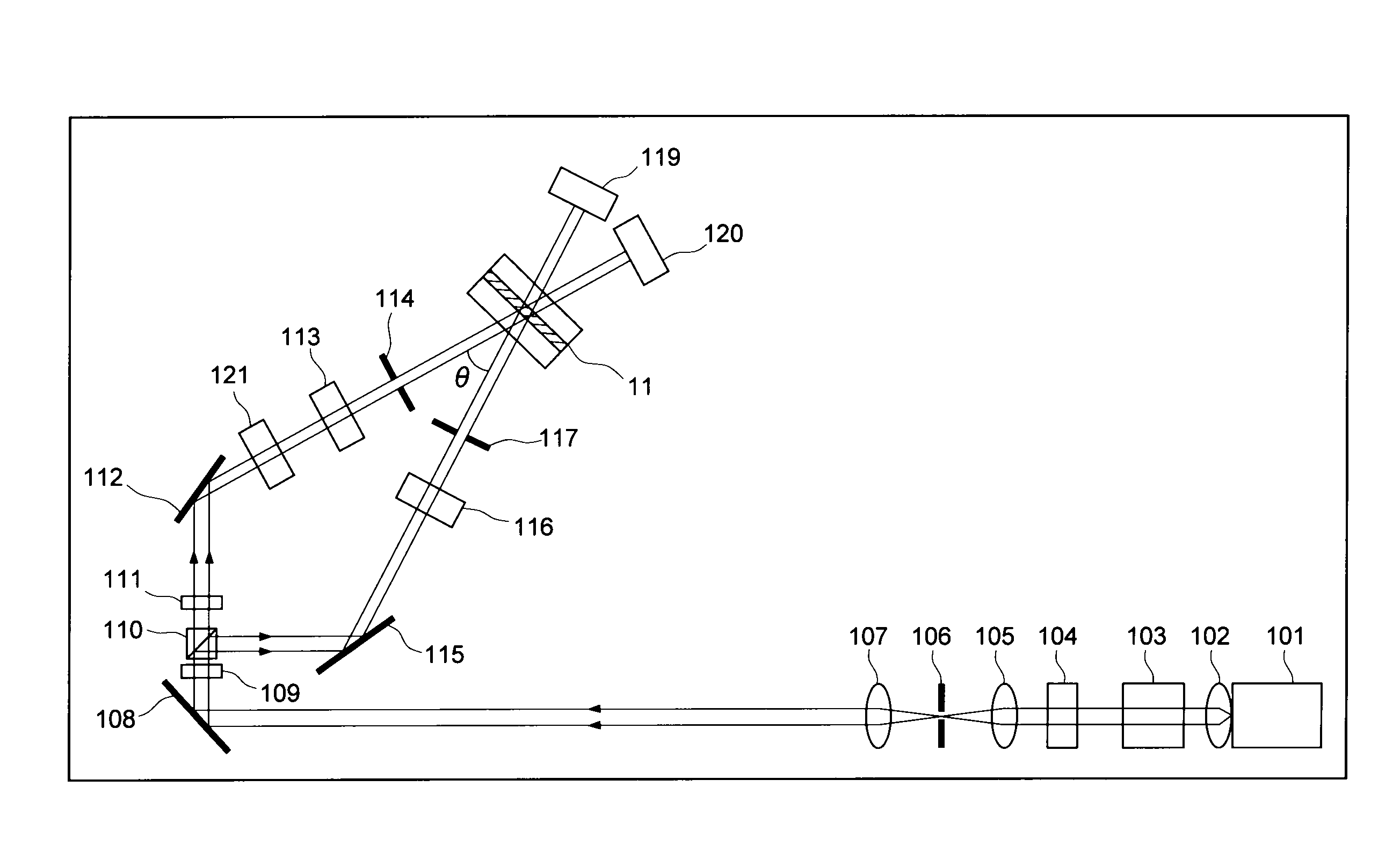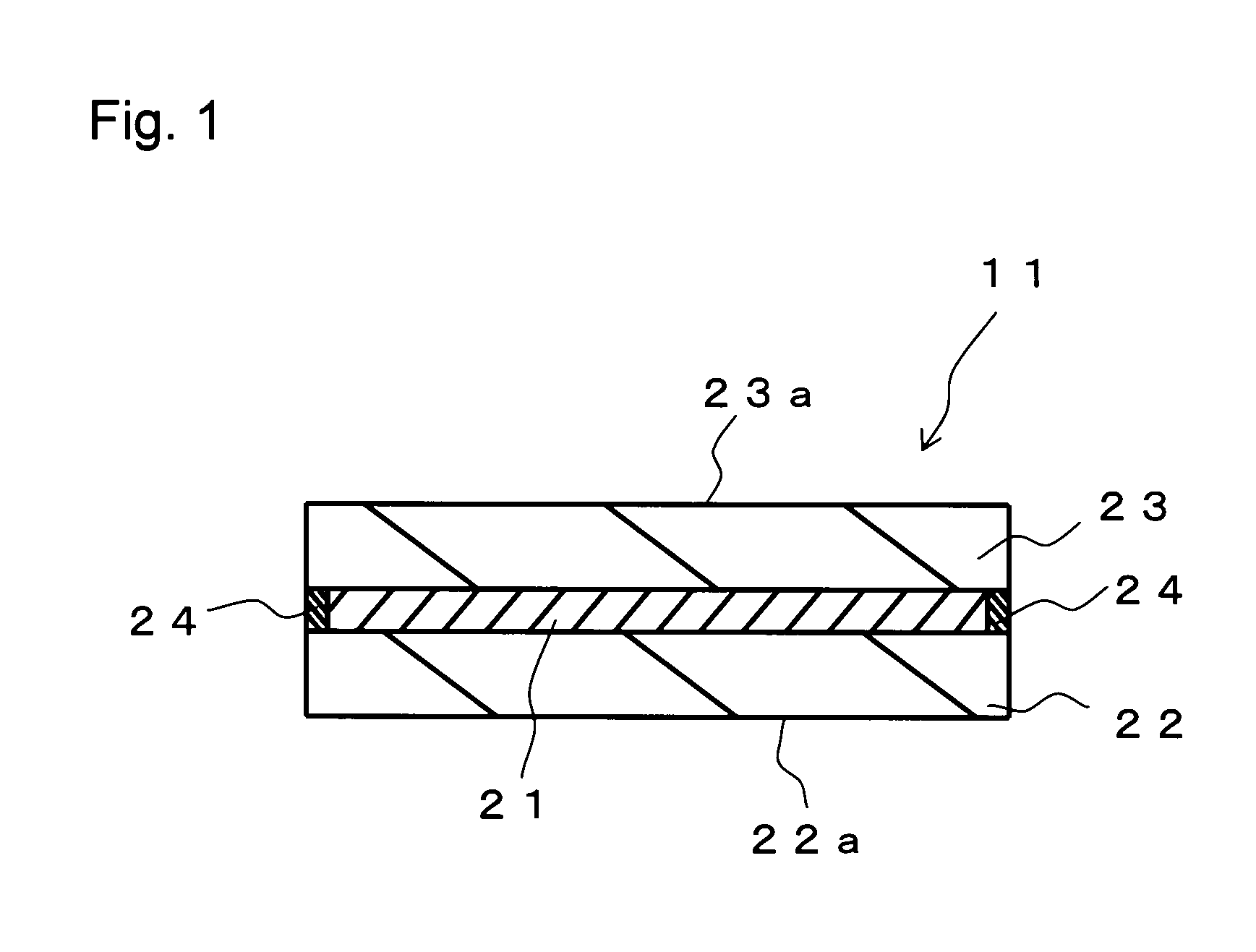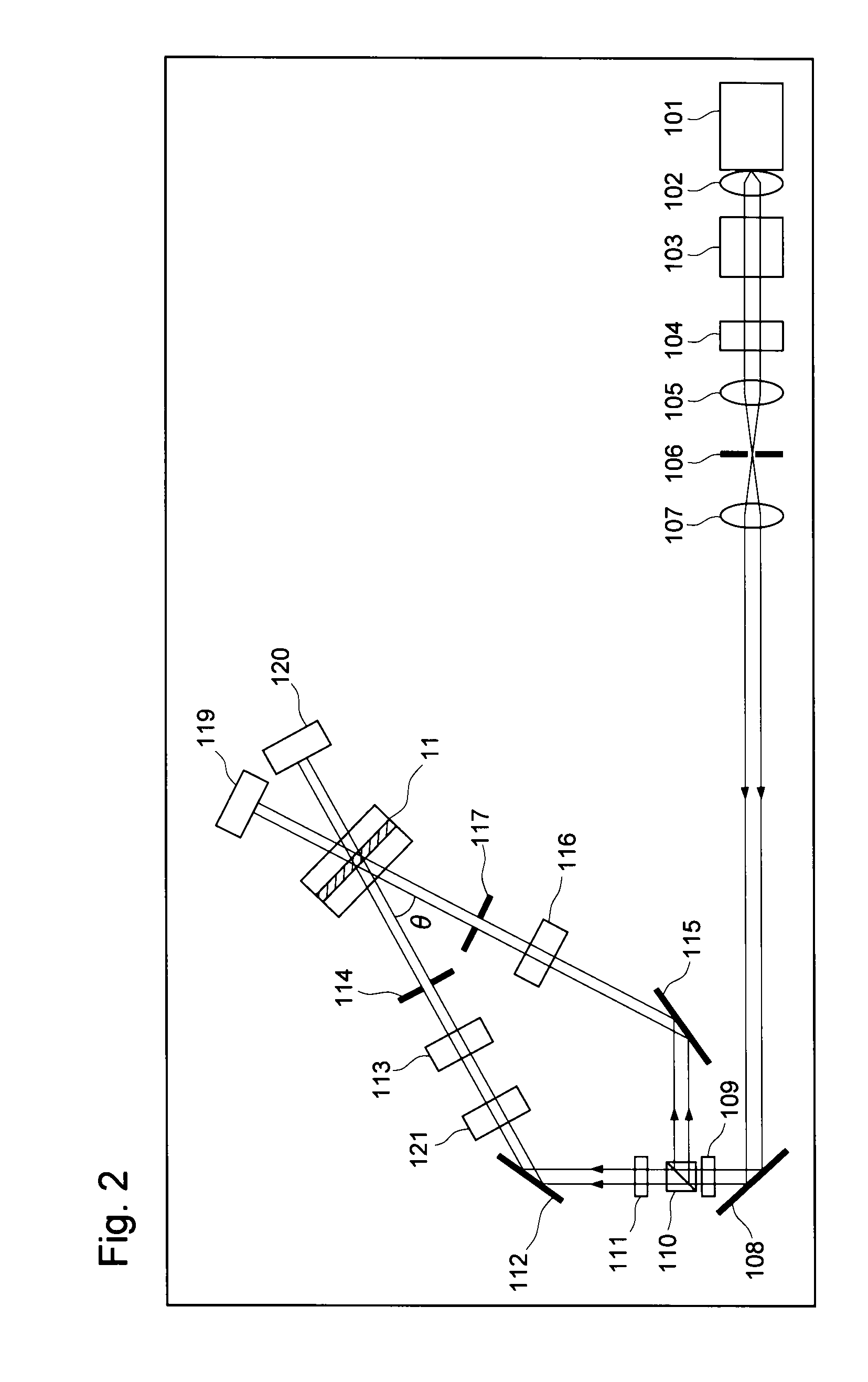Hologram recording material and hologram recording medium
a technology which is applied in the field of hologram recording material and hologram recording medium, can solve the problems of low hydrophilicity of ethylenebisacrylamide, bad effect on the reproduction of recorded information, and uneven dispersion of metal oxide matrix, etc., and achieves sufficient refractive index modulation, sufficient sensitivity, and free volume increase
- Summary
- Abstract
- Description
- Claims
- Application Information
AI Technical Summary
Benefits of technology
Problems solved by technology
Method used
Image
Examples
example 1
Synthesis of an Acrylamide Derivative Monomer
[0128]From N-(hydroxymethyl)acrylamide and polyethylene glycol monomethyl ether, a target compound (a) of monoacrylamidemethyl ether-monomethyl ether of polyethylene glycol represented by the following formula was synthesized in accordance with a method described in JP-A-2006-225446:
CH2═CHCONHCH2OH+HO(C2H4O)nCH3→CH2═CHCONHCH2O(C2H4O)nCH3 (a).
[0129]A mixed solution of 100 parts by weight of N-(hydroxymethyl)acrylamide (manufactured by Wako Pure Chemical Industries, Ltd.), 266 parts by weight of polyethylene glycol monomethyl ether (manufactured by Alfa Aesar Co. in UK, weight-average molecular weight Mw=350), 0.3 part by weight of p-toluenesulfonic acid, and 0.2 part by weight of hydroquinone was heated to 60° C. in the flow of nitrogen gas, and then was reacted for 10 hours. Next, the volatile components were distilled off at 40° C. under reduced pressure. Thereafter, an unreacted fraction of N-(hydroxymethyl)acrylamide was removed by pr...
example 2
[0147]A hologram recording material solution and a hologram recording medium were obtained in the same manner as in Example 1 except that instead of the above 100 parts by weight of monoacrylamidemethyl ether-monomethyl ether of polyethylene glycol (a), a mixture of 90 parts by weight of the compound (a) and 10 parts by weight of methoxypolyethylene glycol acrylate (trade name: LIGHT ACRYLATE 130A, manufactured by Kyoeisha Chemical Co., Ltd.) was used as a photopolymerizable compound.
[0148]About the resultant hologram recording medium sample, angle multiplex recording was conducted for property evaluation in the same manner as in Example 1. As a result, the dynamic range: M / # was 34.9, which was a converted value corresponding to the case that the thickness of the hologram recording material layer was converted to 1 mm.
[0149]In the same manner as in Example 1, the recording shrinkage ratio was measured. As a result, the ratio was 0.1%.
example 3
[0150]A hologram recording material solution and a hologram recording medium were obtained in the same manner as in Example 1 except that instead of the above 100 parts by weight of monoacrylamidemethyl ether-monomethyl ether of polyethylene glycol (a), a mixture of 70 parts by weight of the compound (a) and 30 parts by weight of methoxypolyethylene glycol acrylate (trade name: LIGHT ACRYLATE 130A, manufactured by Kyoeisha Chemical Co., Ltd.) was used as a photopolymerizable compound.
[0151]About the resultant hologram recording medium sample, angle multiplex recording was conducted for property evaluation in the same manner as in Example 1. As a result, the dynamic range: M / # was 37.0, which was a converted value corresponding to the case that the thickness of the hologram recording material layer was converted to 1 mm.
[0152]In the same manner as in Example 1, the recording shrinkage ratio was measured. As a result, the ratio was 0.14%.
PUM
 Login to View More
Login to View More Abstract
Description
Claims
Application Information
 Login to View More
Login to View More - R&D
- Intellectual Property
- Life Sciences
- Materials
- Tech Scout
- Unparalleled Data Quality
- Higher Quality Content
- 60% Fewer Hallucinations
Browse by: Latest US Patents, China's latest patents, Technical Efficacy Thesaurus, Application Domain, Technology Topic, Popular Technical Reports.
© 2025 PatSnap. All rights reserved.Legal|Privacy policy|Modern Slavery Act Transparency Statement|Sitemap|About US| Contact US: help@patsnap.com



